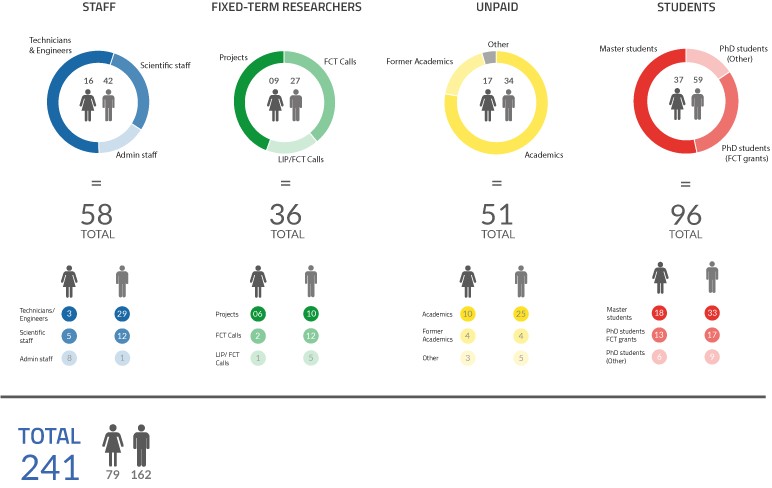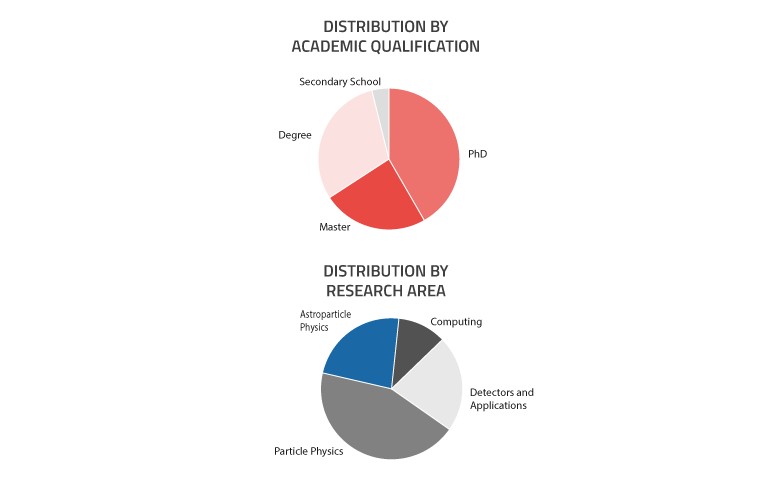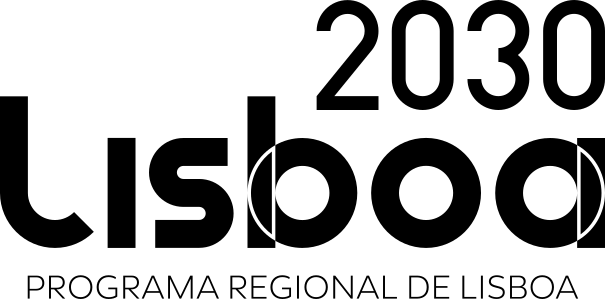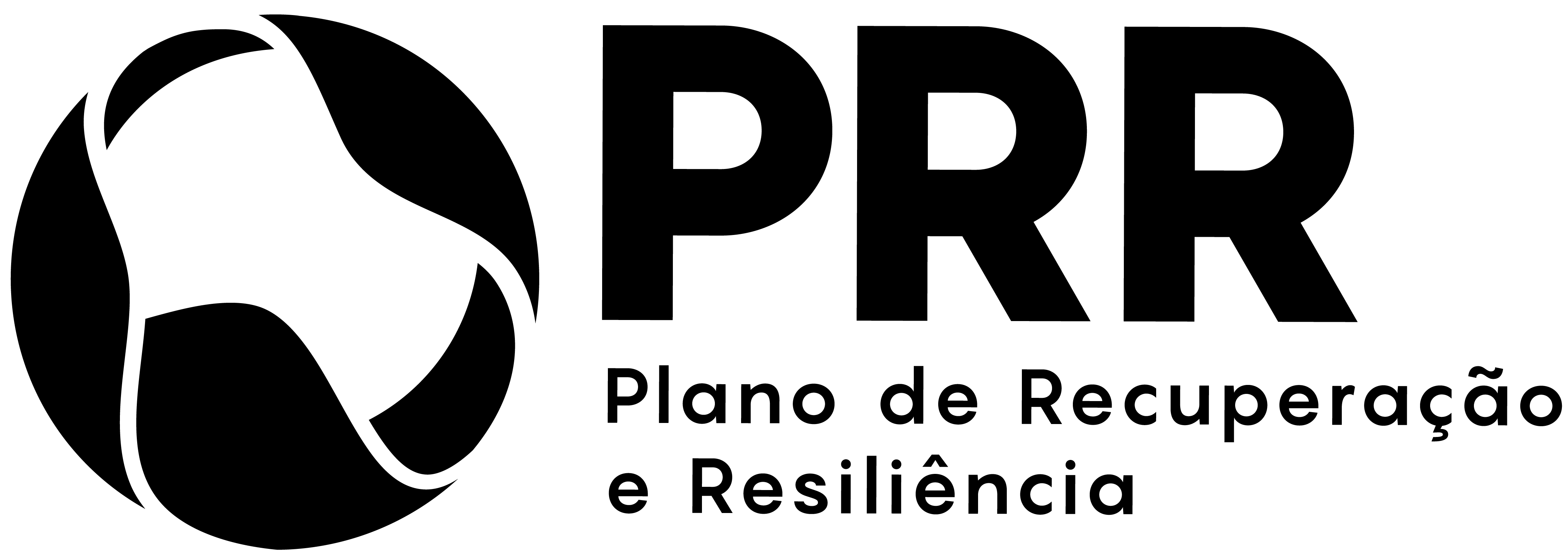LIP, Laboratory of Instrumentation and Experimental Particle Physics, is the reference institution for experimental particle physics and associated technologies in Portugal. It was founded in May 1986 to exploit the unique opportunities created by the country’s accession to CERN, the European particle physics laboratory. LIP brought experimental particle physics in Portugal to a truly international ground and will continue leading this challenge.
Researchers at LIP participate in experiments addressing some of the most compelling questions in science today. They study the properties of the Higgs boson and search for new particles at the LHC, where they recreate the conditions that existed just after the big bang. They investigate the nature of dark matter, neutrinos and very-high-energy cosmic rays. With this goal, they develop new instruments and methods which also have applications in other domains, namely health care technologies, space exploration and information technology.
LIP is about Particles, Technology and People
Mission
LIP is devoted to research in experimental particle physics and associated technologies, enhancing the direct access of the Portuguese scientific community to international infrastructures and collaborations. At the centre of our mission are also scientific computing, advanced scientific and technical training and the engagement of society with science. Opportunities of knowledge and technology transfer to society are also explored, in domains such as health, space exploration and information technologies.
History
LIP was created in May 1986, in the context of Portugal’s accession to CERN, with delegations in Lisboa and Coimbra. The birth of LIP, under the leadership of Professor José Mariano Gago, brought together and enhanced the efforts of the then embryonic community of experimental particle physicists. CERN was the first international scientific organization Portugal joined. LIP has thus, on its own right, a place in the history of research in Portugal, particularly, in the chapters devoted to the internationalization of science and to the enormous boost in advanced training in recent decades.
TimelineGeography: LIP's nodes
LIP is present in Lisboa, Coimbra and Braga, in close collaboration with the local Universities. The geographically-distributed nature of LIP reflects the need to articulate strategies at National level, in a domain in which research is often conducted in the framework of large international collaborations and/or relying on international scientific infrastructures.
Lisboa
The initial core of LIP in Lisboa was constituted in 1986 by professors from IST and the Faculty of Sciences, who embodied the challenge of developing in Portugal a research group on experimental particle physics linked to CERN. At the time they were half a dozen researchers. Today we are about a hundred in Lisbon: researchers, students, engineers, technicians and administrative staff. Maintaining a strong connection with CERN, in particular with the participation in the LHC, LIP's activity in Lisbon extended to large particle physics experiments around the world and in space, as well as to the participation in ESA’s projects. The laboratory has technological skill of reference, and a wide set of scientific and computing infrastructures. LIP-Lisboa is strongly connect to University and to society at large, with an active outreach, education and advanced training program.
Coimbra
The LIP-Coimbra node exists since the foundation of LIP in 1986. Under the guidance of Armando Policarpo, LIP-Coimbra inherited a long tradition in the development of gaseous detectors and was involved in CERN projects from the early years. The development of new instruments and methods for particle physics remains one of the main pillars of LIP. Today, LIP-Coimbra has world reference groups in key radiation detection technologies, in particular resistive plate chambers (RPC) and gaseous and liquid xenon detectors. Current activities include application to medical physics and space exploration. In Coimbra, LIP has a precision mechanical workshop and a detectors lab that perform a wide spectrum of services for LIP and for external costumers. LIP-Coimbra also participates in large particle and astroparticle physics experiments, as well as in advanced training and outreach activities.
Minho
The node of LIP in Minho was created in 2010, with the signature of a collaboration agreement between LIP and the University of Minho. Today, it has about 30 members, including researches, students and technicians. LIP’s activities in Minho are organized in four groups: particle physics with accelerators, with the participation in the ATLAS experiment and phenomenology studies related to precision measurements of the top quark and Higgs boson, as well as to searches for new physics; astroparticle physics, with the participation in the Pierre Auger Observatory; advanced computing; outreach.
Partners
LIP's associated are FCT (Fundação para a Ciência e Tecnologia), the Universities of Lisboa, Coimbra and Minho, Instituto Superior Técnico, FCUL — Faculdade de Ciências da Universidade de Lisboa and ANIMEE (Associação Portuguesa das Empresas do Sector Elétrico e Eletrónico). LIP is present in Lisboa, Coimbra and Braga, in close collaboration with the local Universities. LIP is a "Laboratório Associado" of FCT since 2001.
LIP develops its activity in the framework of CERN and ESA — European Space Agency, as well as with international research infrastructures such as the SNOLAB (Canada) and Pierre Auger (Argentina), observatories, the SURF (USA) and GSI (Germany) laboratories. LIP works in close collaboration with a wide set of national and international academic and research institutions, in particle physics and related applications and technologies. Concerning health care technologies our reference partners in Portugal are: ICNAS (Instituto de Ciências Nucleares Aplicadas à Saúde) and CTN (Campus Tecnológico e Nuclear). LIP participates in national and international distributed computing infrastructures and projects. With FCT/FCCN and LNEC, LIP co-leads INCD (Infraestrutura Nacional de Computação Distribuída). In the promotion of the scientific and technological culture, the lab is a partner of Sociedade Portuguesa de Física (SPF) and Agência Ciência Viva at national level and a member of the International Particle Physics Outreach Group (IPPOG) and of the European Particle Physics Communication Network (EPPCN).
212 membros
103 investigadores doutorados
60 estudantes de pós-graduação
15 teses de Mestrado e Doutoramento
Mais de 20 projetos de investigação
274 artigos publicados em co-autoria
89 contribuições para conferências internacionais
12 encontros internacionais em Portugal
50 palestras de divulgação científica
52 professores da CPLP na escola LIP no CERN
2000 alunos do Ensino Secundário em masterclasses


História
The accession of Portugal to CERN in 1985 represents a landmark for the history of modern Portuguese science. CERN was the first international scientific intergovernmental organisation to be joined by Portugal, followed by ESO, ESA, ESESO, ESA, ESRF and EMBL more than one decade later. The Portuguese participation at CERN contributed decisively to the progress of Portuguese science and technology, to the development of modern science policies in Portugal and to new R&D and technological capabilities by Portuguese industry.
CERN, April 26th 1985
Signature of the Agreement for the Accession of Portugal to CERN as a member state, by the Portuguese Ministry of Foreign Affairs (Jaime Gama), and by CERN Director-General (Herwig Schopper).Seated, from left to right, W. Kummer (President of CERN Council), Jaime Gama, Herwig Schopper. Standing, from left to right, Castro Brandão, Pinto Lemos, Favila Vieira, José Mariano Gago and Jean-Marie Dufour (Head of CERN Legal Services).
Lisbon, October 16th 1985
Charter for the accession of Portugal to the CERN Convention, signed by the President of the Portuguese Republic António Ramalho Eanes, and countersigned by the Ministry of Foreign Affairs, Jaime Gama
CERN, January 1st 1986
First hoisting of the Portguese flag at CERN, with Herwig Schopper (CERN Director-General), Eduardo Arantes e Oliveira (Secretary of State for Science and Technology), António Costa Lobo (Portuguese Ambassador), as well as CERN staff and Portuguese physicists: Peter Sonderegger, Sérgio Ramos, Gustavo Castelo Branco, Mário Pimenta, Margarida Nesbitt, João Varela, Gaspar Barreira and José Mariano Gago (with Karin Wall Gago and their baby daughter Catarina).
O LIP foi criado em Maio de 1986, no contexto da adesão de Portugal ao CERN, com delegações em Lisboae Coimbra. O nascimento do LIP veio congregar e potenciar os esforços da então embrionária comunidade de físicos experimentais de partículas. Sendo o CERN a primeira organização científica internacional de que Portugal se tornou membro, a história do LIP é um elemento incontornável da história da investigação científica em Portugal. Em particular, o LIP surge com lugar de destaque nos capítulos dedicados à internacionalização da ciência no nosso país e ao enorme impulso que a formação avançada conheceu nas últimas décadas.
Nestes 27 anos o LIP cresceu e transformou-se. Envolve hoje cerca de 170 investigadores, 70 dos quais doutorados, nas suas delegações de Lisboa, Coimbra e Minho. Em 2001, tornou-se Laboratório Associado do Ministério da Ciência, Tecnologia e Ensino Superior. Através do LIP, Portugal tem estado na primeira linha dos grandes projetos de física de partículas das últimas décadas. Os seus domínios de investigação englobam hoje a física experimental de partículas e astropartículas, o desenvolvimento de detetores e instrumentação associada, aplicações à física médica e computação avançada. As actividades do LIP desenvolvem-se em relação já não só com o CERN mas com diversas organizações de investigação nacionais e internacionais.










